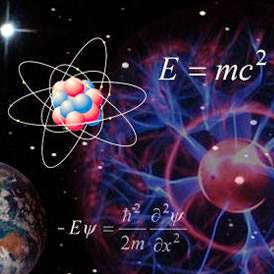 |
| Credit: Columbia University |
Pulsars are neutron stars—remnants from supernova explosions. Neutron stars have immensely huge magnetic fields (think ~1012 times Earth's magnetic field). These fields accelerate charged particles, and in the course of that acceleration, light is emitted. But because of the nature of the fields, the light is emitted in a rather narrow cone. Because neutron stars rotate, this cone is scanned like a search light across the sky. So we only observe pulsars if the powerful beam happens to sweep across the face of the Earth.
This pasta has a distinctive property: it changes the way energy is dissipated and transported within the star. The magnetic field generates currents in the pasta region, which provides an intermediate step in converting magnetic energy to rotational energy. Hence, the crust changes the way the star spins down. In a series of models that take different neutron star masses, different crust diameters, and differently pasta region sizes, researchers from Spain showed that without a pasta region of some kind, a neutron star continues to spin down indefinitely, and we should observe X-Ray pulsars with periods that extend out past one minute.
The pasta, however, disrupts the magnetic field, stealing energy from it. In the end, that energy is transferred to rotational energy, keeping the spin period up. This is not such an efficient process, though, so for the early stages of the neutron star's life, it rapidly spins down. This continues until the additional energy from the magnetic field counters the losses due to other processes, stabilizing the rotational period at the cost of the magnetic field. The exact period at which this occurs depends on the mass of the star, the thickness of the crust, and the fraction of impurities in the crust.
This pasta has a distinctive property: it changes the way energy is dissipated and transported within the star. The magnetic field generates currents in the pasta region, which provides an intermediate step in converting magnetic energy to rotational energy. Hence, the crust changes the way the star spins down. In a series of models that take different neutron star masses, different crust diameters, and differently pasta region sizes, researchers from Spain showed that without a pasta region of some kind, a neutron star continues to spin down indefinitely, and we should observe X-Ray pulsars with periods that extend out past one minute.
The pasta, however, disrupts the magnetic field, stealing energy from it. In the end, that energy is transferred to rotational energy, keeping the spin period up. This is not such an efficient process, though, so for the early stages of the neutron star's life, it rapidly spins down. This continues until the additional energy from the magnetic field counters the losses due to other processes, stabilizing the rotational period at the cost of the magnetic field. The exact period at which this occurs depends on the mass of the star, the thickness of the crust, and the fraction of impurities in the crust.
Ars Technica: X-Ray pulsars boil “nuclear pasta” to keep spinning

No comments:
Post a Comment